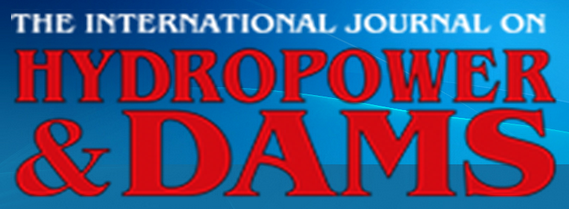
The future of hydropower development in Timor Leste
Timor Leste has been an independent nation since 2002. The country is underdeveloped and in need of improved basic infrastructure including roads, ports and power stations. A lack of legal framework and regulations continues to be a barrier to project financing. Hydropower could represent an excellent opportunity for Timor Leste and this paper examines the potential and challenges for developing this important resource.
Timor Leste shares the island of Timor with Indonesia, east of Bali and Lombok. The country has an area of 14 609 km2 and is mountainous with small valleys and a long coastline. The capital, Dili, has a population of around 200 000. Following colonization by the Portuguese, and rule by Indonesia and the UN, the country was declared an independent nation. Since 2002, the country has been a democracy, with opposition parties permitted. Oil, gas and agriculture are the main economic sectors, with tourism potential and electric power relatively undeveloped and mining remaining undeveloped. Timor Leste’s roads, bridges and other infrastructure are generally in poor condition although the reconstruction of the Dili- Liquica highway is in progress.
1. The power generation and distribution sector
Electricidade de Timor Leste (EDTL) is the vertically integrated monopoly generator and distributor of electric power in areas served by its limited grid system, and in isolated areas served by EDTL diesel generators. EDTL faces serious financial constraints because of the chronic non-payment of electricity invoices. Commercial losses have recently run at 50 to 60 per cent of power generated. Donors, in particular Australia, Japan, Portugal and Norway, have been subsidizing EDTL’s losses.
The primary power supply is from the 16 MW dieselfired Comoro power station in Dili and two recently installed Wartsila dual fuel fired facilities, Hera (120 MW) and Betano (135 MW). As no natural gas is at present available, both facilities run on heavy fuel oil. At petrol prices of US$ 100/barrel, these facilities are very uneconomic, although new lower petrol prices improve the economics. The Secretary of State for Electricity and Water has announced plans for a new 17.3 MW Wartsila dual fuel (heavy fuel oil or natural gas) facility in Oecusse. A significant portion of the output from the Betano heavy fuel oil facility will be consumed by the Tusi Mane refinery/petrochemicals facility also planned for Betano.
As a result of an insufficient grid, small diesel-fired generators are the main source of electric power in many localities. Existing distribution facilities ensure adequate electric power supply in Dili (the capital) and Bacau (the second largest town). Transmission lines link Dili and Bacau (to the east) and Dili and Maubara and the West Timor (Indonesia) border (to the west). Elsewhere generation and distribution systems are inadequate or problematic, with many towns and rural areas lacking a 24-hour supply. Many villages lack electricity altogether; candle-light is commonly used.
As present power demand in Timor Leste is not huge. A Timor Leste large-scale hydropower project should consider the partial export of output to Indonesian-controlled West Timor. Kupang, the capital of the Indonesian Region of East Nusu Tenggara (which includes West Timor as well as the islands of Flores and Sumba), with a 2014 estimated population of 364 000 is considerably larger than Dili and has unserved demand for electric power.
PT PLN (the Indonesian state-owned electric utility) statistics indicate a 63 per cent increase in West Timor electric customers from 77 237 in 2011 to 125 917 in 2012 with 2012 sales of 98 399.19 MW (an increase of 15.8 per cent from the previous year). The statistics also indicate that 44.56 per cent of West Timor households continue to lack access to an electric utility service, relying instead on oil lamps, torches, and so on, for lighting. Average per capita annual electric consumption for existing residential customers is quite low: 703 kWh compared with 3520 kWh in Jakarta. There is clearly room for increased consumption.
As of 2012, the installed capacity in the entire region of East Nusu Tenggara was 151 MW, rated at 103 MW. Nearly all of this capacity consists of diesel-fired generators. Three small hydro units and one geothermal unit supply just 3.5 MW. The current PLN power supply plan calls for the construction of five additional power generating facilities in West Timor by 2020, with 197 MW of total installed capacity.
Four of the new facilities, ranging in size from 30 to 80 MW, will be near Kupang; the fifth is a 24 MW facility in Atambua not far from the Timor Leste frontier. These are all diesel or heavy fuel oil fired units. A cross-island transmission line from Botok near Kupang to Atapupu on the coast not far from the Timor Leste border is under construction. This line could be interconnected with the Timor Leste transmission system through a relatively short extension.
On a long-term cost of production basis, imported hydropower from Timor Leste should be very competitive against the overwhelmingly diesel-based electric power supply existing in West Timor.
To download the full article, please click here.


